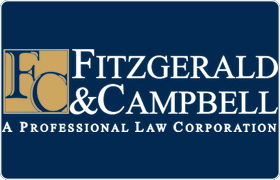Janesville Bankruptcy & Debt Lawyer, California
Sponsored Law Firm
-
 x
x

Click For More Info:
-
Fitzgerald & Campbell, APLC
400 N. Tustin Avenue Suite 401 Santa Ana, CA 92705» view mapBankruptcy & Debt Lawyers Who Solve Serious Problems
We are a motivated, respected, and experienced law firm that provides affordable services that get results.
800-732-9061
Not enough matches for Janesville Bankruptcy & Debt lawyer.
Below are all Janesville lawyers.
Peter Mathew Talia
Real Estate, Trusts, Estate, Family Law
Status: In Good Standing Licensed: 52 Years
Mark Robert Nareau
Real Estate, Traffic, Lawsuit & Dispute, Medical Malpractice
Status: In Good Standing Licensed: 43 Years
 Gregory Fitzgerald Santa Ana, CA
Gregory Fitzgerald Santa Ana, CA AboutFitzgerald & Campbell, APLC
AboutFitzgerald & Campbell, APLC Practice AreasExpertise
Practice AreasExpertise
